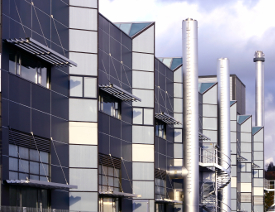The IoT Pulls Industrial Computing to the Edge
As Internet of Things (IoT) platforms become reality, more and more people are beginning to feel its impact. Bill Lydon, Editor of Automation.com, recently coined a new phrase: the “Manufacturing Internet of Things”, or MIoT. He points out that much of the ground work for the IoT was actually laid by the industrial community, which has been working with remote data acquisition and connecting machines to machines (M2M) for decades. He sees the MIoT as the driving force for a quantum leap in the quality of the manufacturing infrastructure, coupled with a broader reach.
In an article titled Manufacturing Internet of Things (MIOT), Lydon defines the MIoT as the result of applying the technology of computers and the Internet to boost productivity. He points out that although we have seen a steady growth of these two technologies in the industrial arena, things are beginning to move more quickly, which will have a clear positive impact. He writes: “The application of the MIoT concept will ultimately improve manufacturing performance and enable better integration with business systems.”

Traditionally all of these systems, SCADA, MES, and ERP have functioned based on a central server model, where inputs from the field or shop floor would be collected, integrated, processed, and fed to connected systems or end users. Over time, as connectivity and computing power increased, these systems have grown more capable and faster, approaching real-time response in some instances.
A New Architectural Map
Now, according to Lydon, new changes from the IoT are expanding computing capabilities from the center to the edges, redrawing the architectural map of computer-assisted manufacturing. On the one hand is a steady increase in computing power within devices: sensors, motors, cameras, and so on, providing them with control, data processing and communications capabilities. On the other hand, user tablets and mobile phones now offer more computing power than NASA used to land a man on the moon.
This new computing power on the edges of the system is accelerating a trend towards distributed computing in manufacturing. Adding to this, says Lydon, is the advent of distributed databases and parallel processing. The result is that “this technology can be used to streamline, collapse, and create systems architectures that are more cost effective, responsive, and effective.”
One Additional Piece
What’s missing from this description? From our perspective at least, a key player in the IoT is the cloud. The flexibility and reach of cloud-based systems make them ideal for integrating the larger scales and wider distribution of edge computing. Of course, to be most effective, cloud-enhanced manufacturing systems would be best served by real-time responsiveness and robust security. These are issues that must be taken seriously, and the pioneers and innovators in the MIoT who acknowledge them will keep their eyes open, staying alert for new opportunities as they become available.
For those wondering about how or when to get involved, Lydon concludes with practical advice: those who adopt too early may suffer growing pains; those who adopt too late might get left behind. But those who find the sweet spot between those extremes will be the fortunate. In any event, he says, “My view is that the creative and innovative application of automation is essential for manufacturing companies to survive.”





